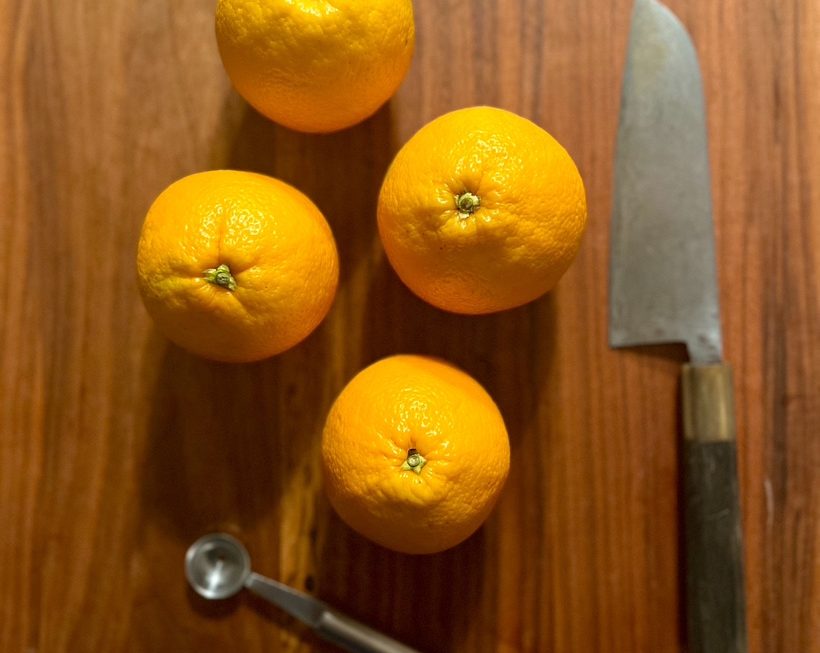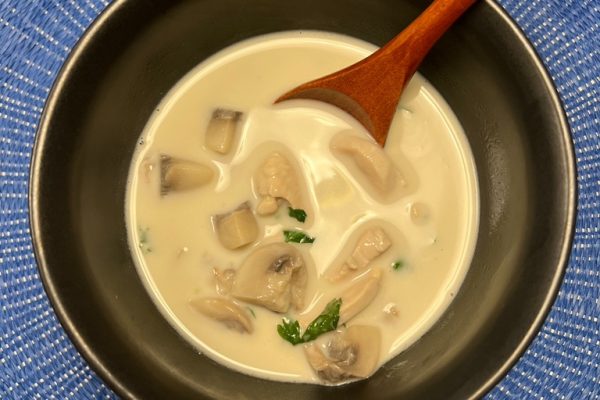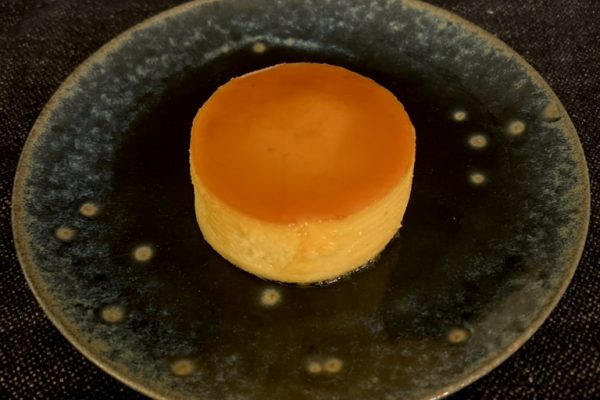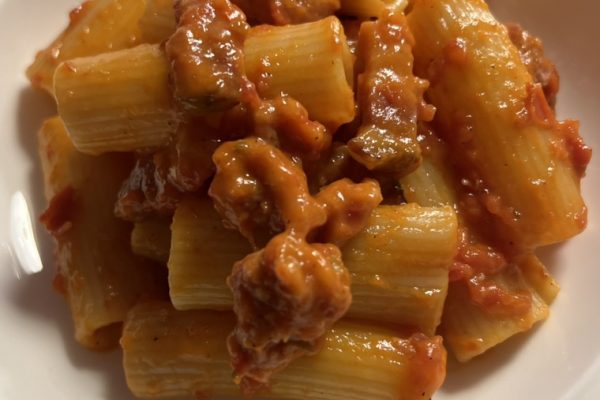Today we serve an Italian dessert classic that can be prepared easily the previous day to round off a menu. Typically Italian, with few ingredients that are beautifully presented. A little forgotten, but unjustly so.
Above all, you need very good oranges of typical size, i.e. somewhat smaller than a fist. Not too small, otherwise the dessert will turn out puny, but please no huge juice oranges either.
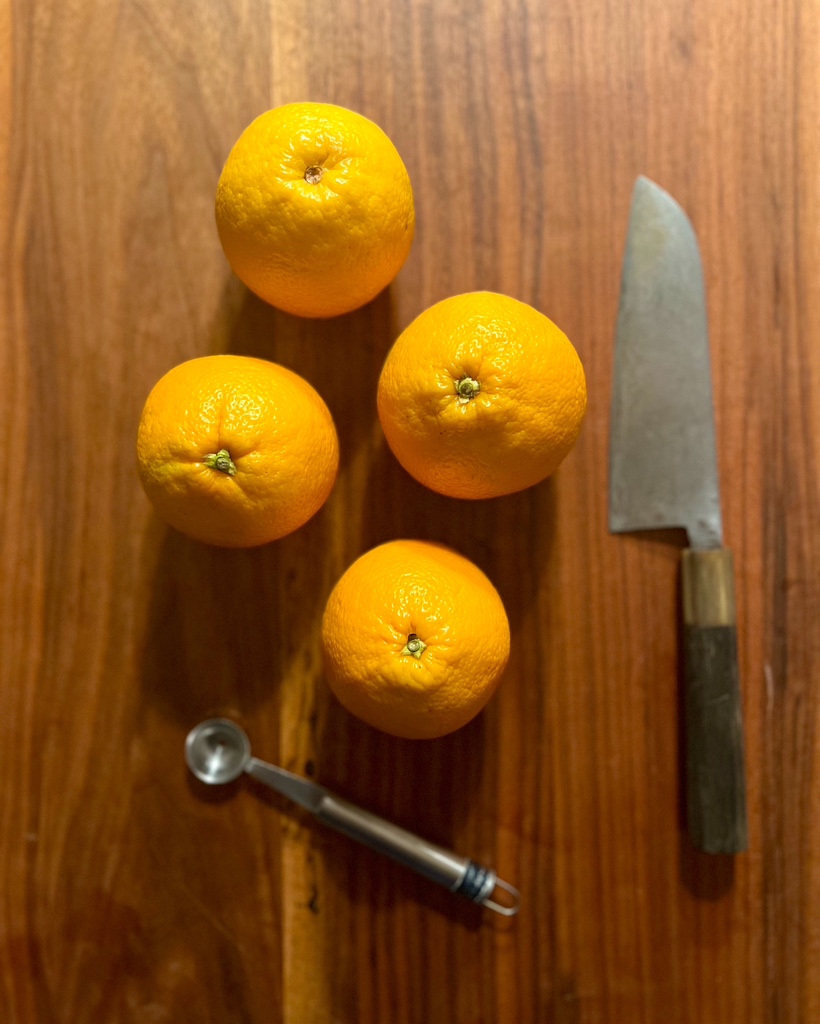
Carefully cut a very small tip off the bottom of the orange, just enough so that the orange can be placed upright. Cut off the top of the orange horizontally, a little more generously, so that you can make a bowl out of the peel.
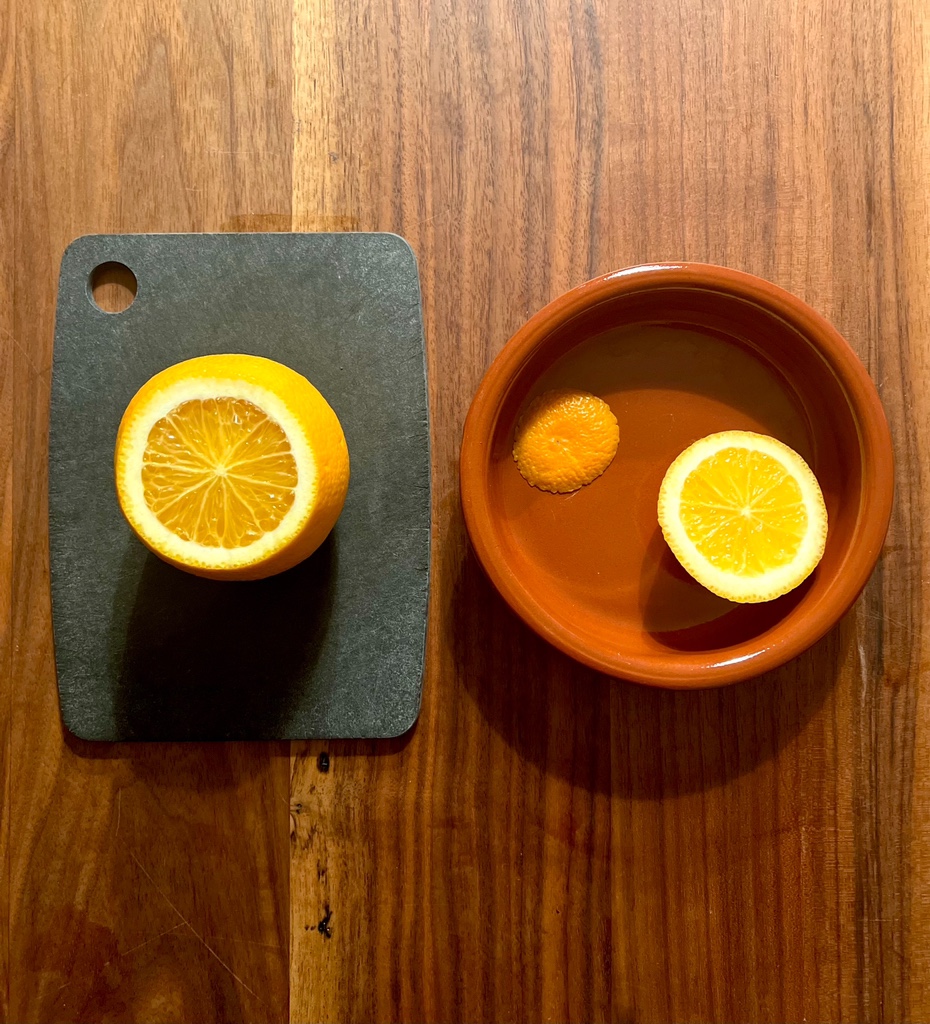
Now comes the only difficult part – scooping out the peel. It’s much easier with a Parisian spoon, which is an inexpensive kitchen utensil to invest in anyway. Be careful to scoop out the fruit well, but do not cut off the white part of the skin, which has a very bitter taste. You must also be careful not to cut too deeply into the base so that the orange peel remains leak-proof.
Put the pulp into a sieve, which you place on a bowl or pot to reserve the juice.
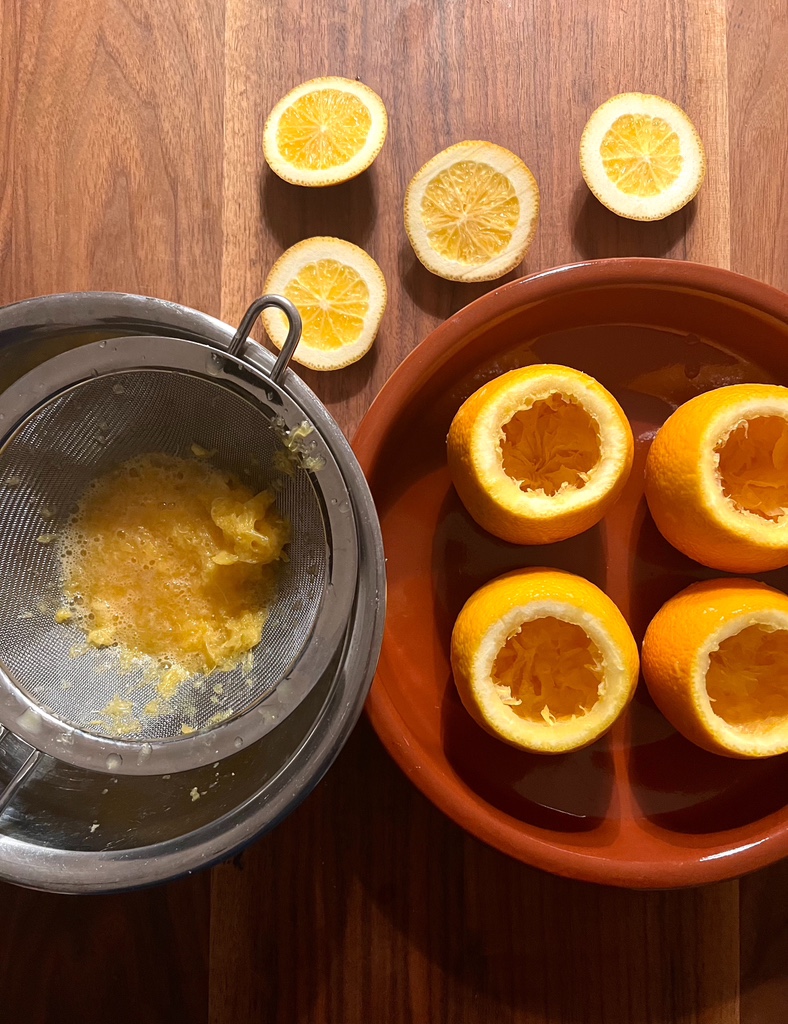
Press the pulp thoroughly through the sieve with a spoon and pour the orange juice into a measuring cup.
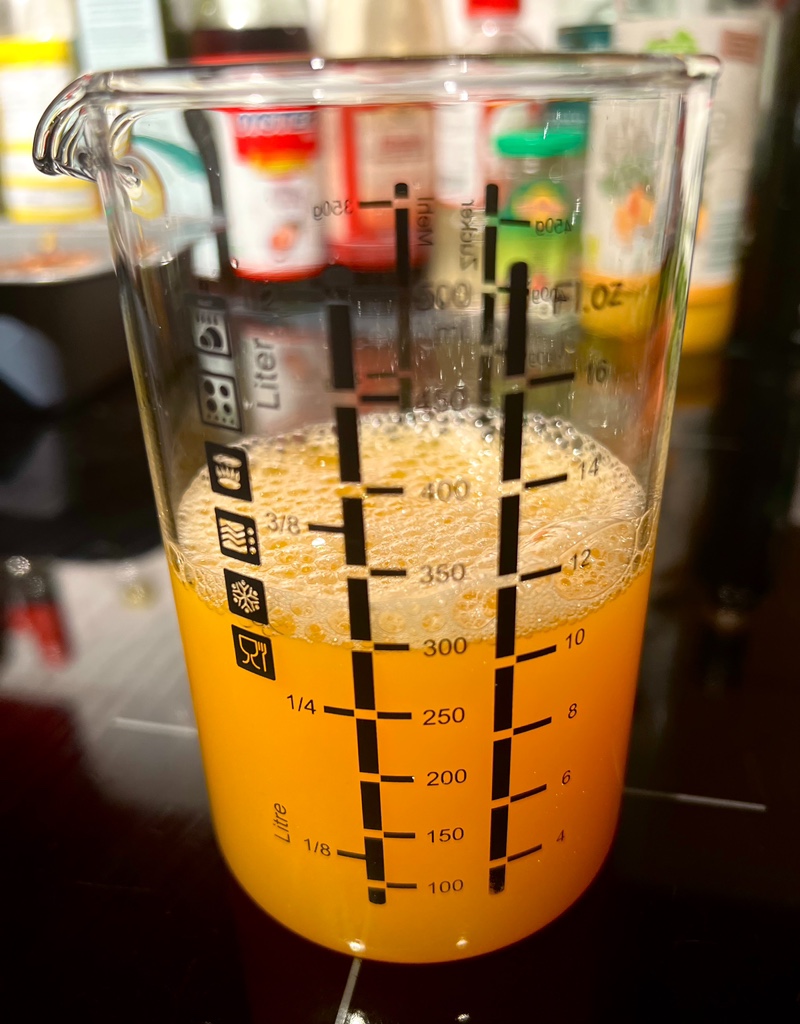
Now fill up the juice with milk to 500 ml.
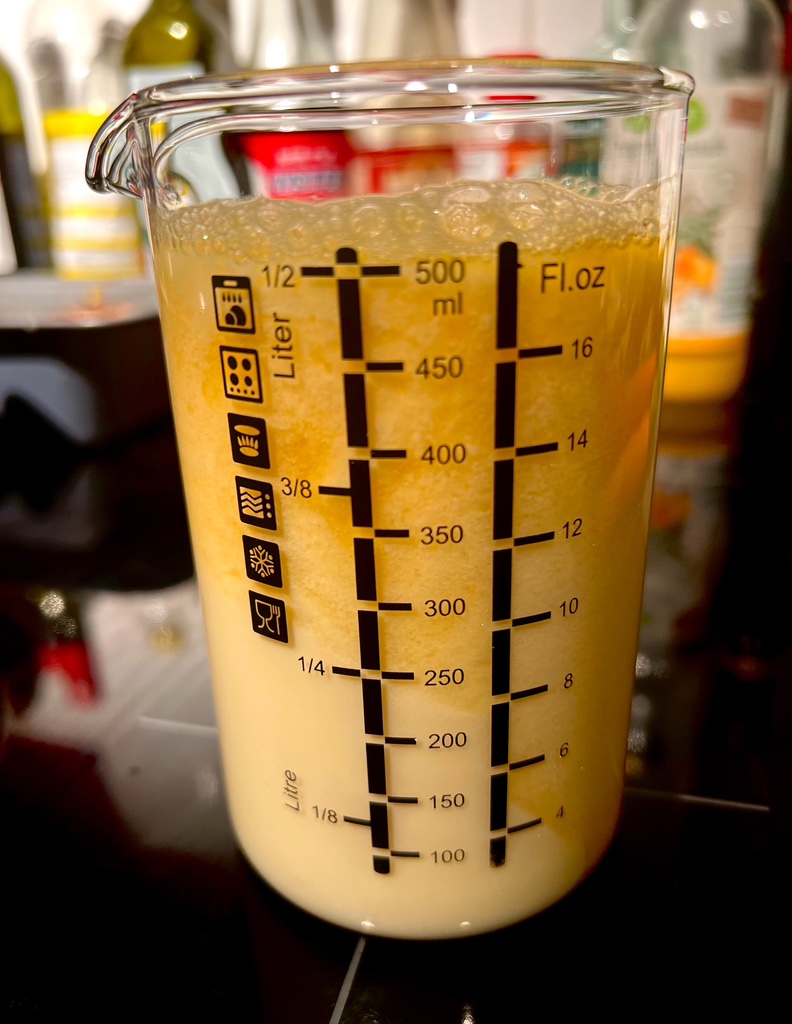
Put the sugar and the egg yolks into a pot that can hold at least one litre.
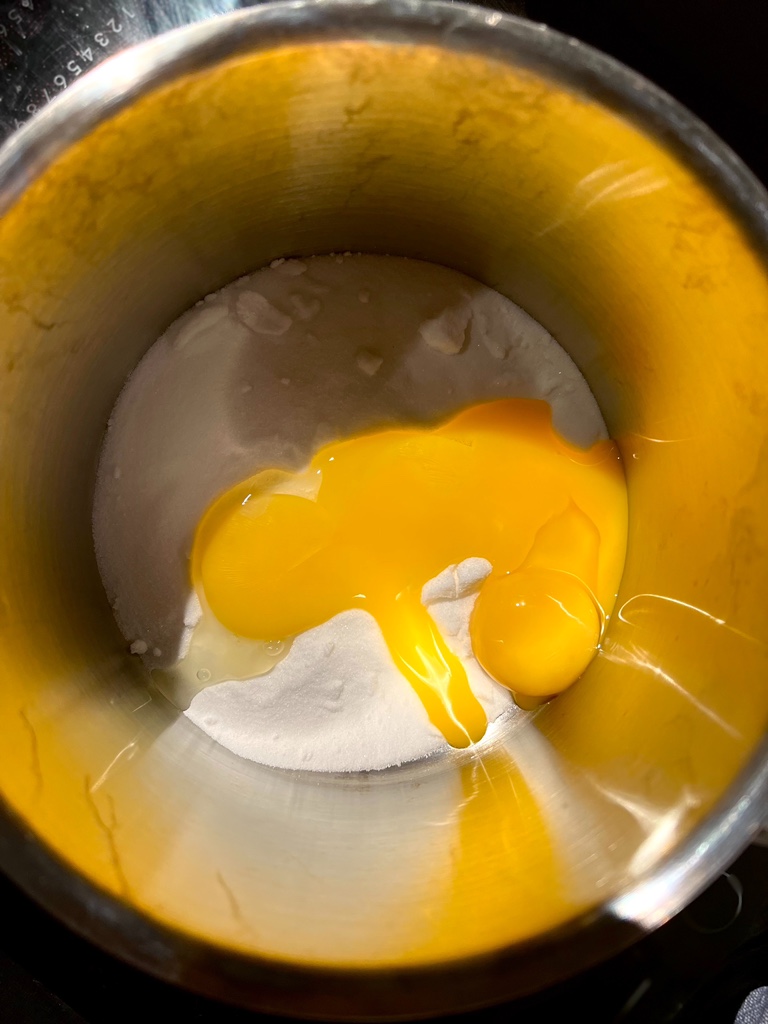
Now take a fine sieve, hold it over the pot, add the flour and gently shake it through the sieve. This way you don’t risk lumps forming later and you achieve a finer texture of the cream.
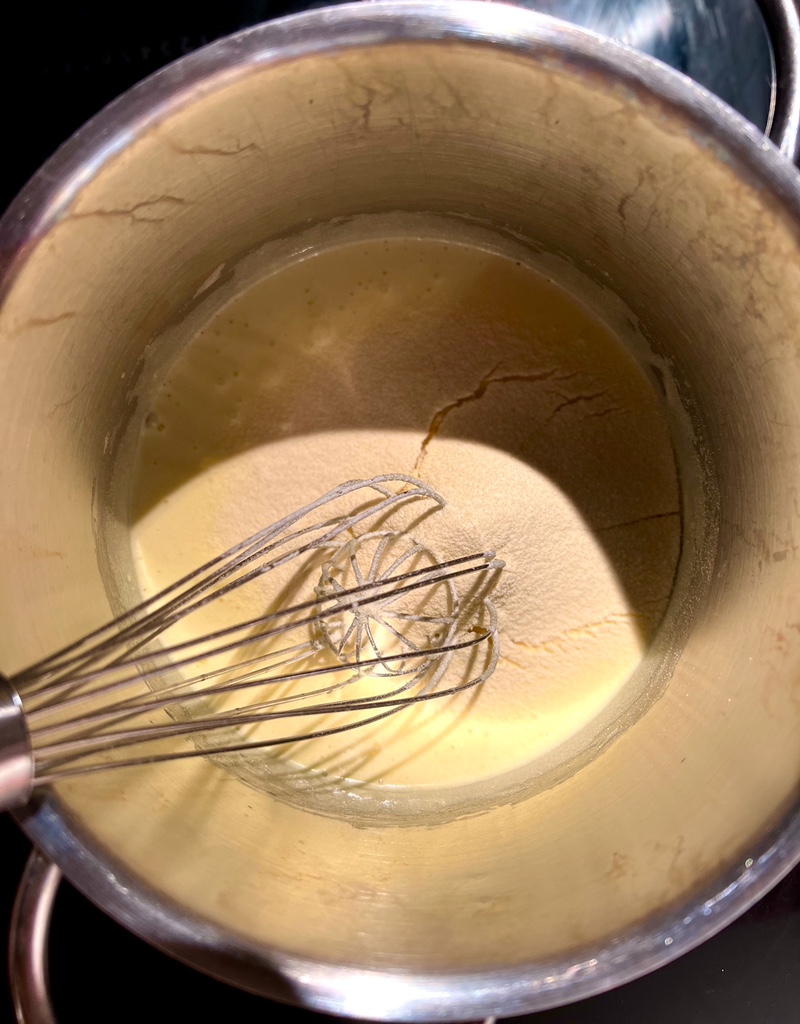
Whisk the flour into the mixture. Then slowly add your mix of orange juice and milk and stir until it becomes a homogeneous liquid.
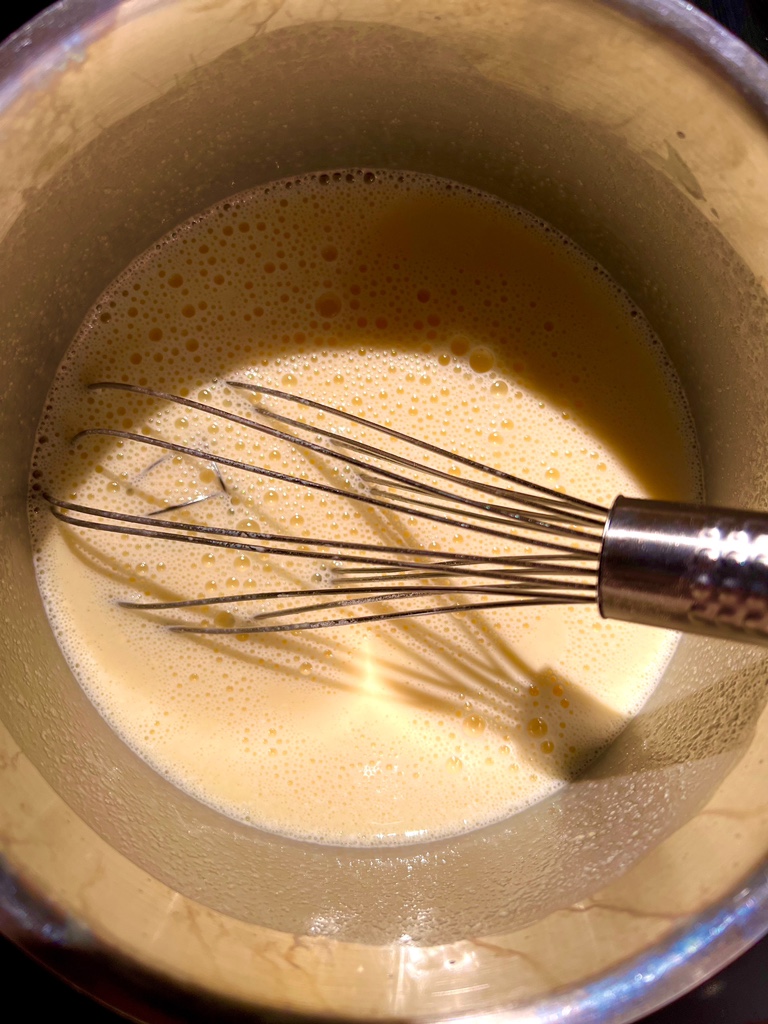
Now heat the pot on low heat (for us: 4 of 10). Under no circumstances should you become impatient. Allow everything to heat up slowly and stir again and again, whereby you have to brush over the entire bottom of the pot so that nothing sticks and may burn. A wooden spoon is particularly suitable for this.
It takes up to 25 minutes, during which you should not leave the pot unattended without stirring for more than about 4 minutes. So much time is necessary, because also flour needs to be cooked, to be palatable.
The mixture is ready when it coats the spoon without running down immediately.

Now just let the cream cool down until it is lukewarm, then add orange liqueur to taste and mix everything thoroughly again. Now you can pour the finished cream into your orange peels.
You will see: The trick with filling up the milk to 500 ml leads to this fitting very well. Only how much juice and how much milk the cream contains is different by nature.
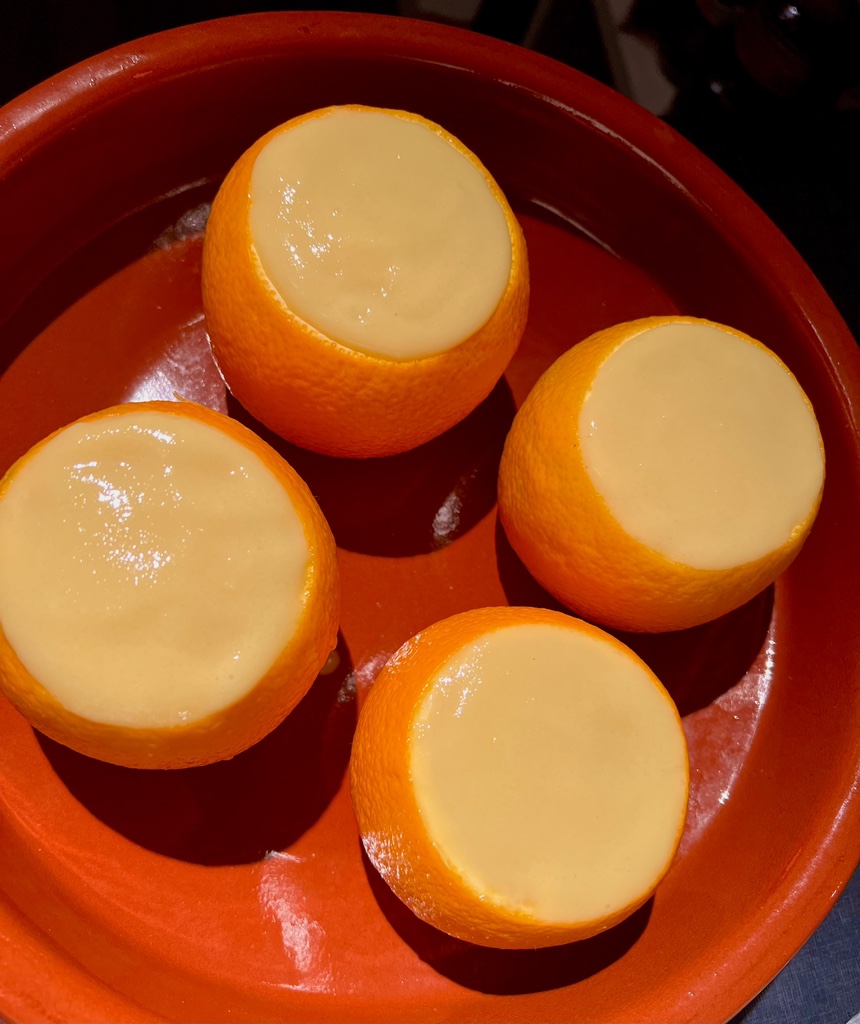
You can put the lids of your oranges on top of each other, so they stay fresh. Serve with the lid on, for a little theater.
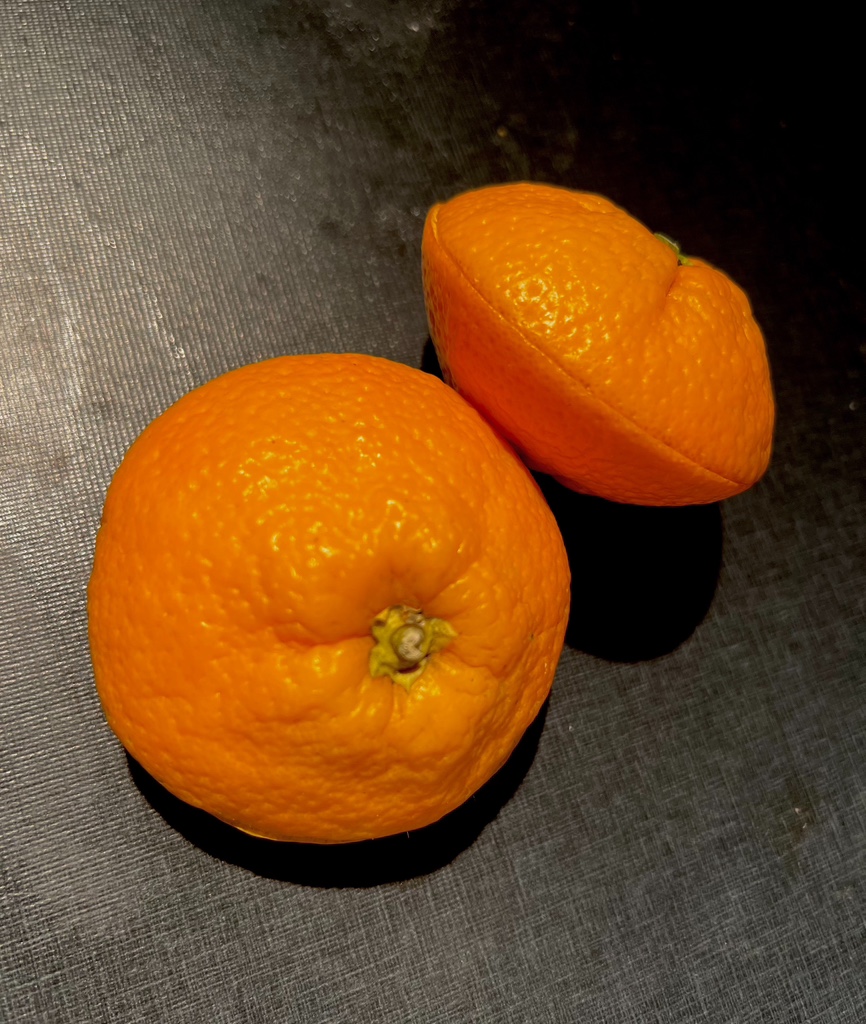
Enjoy.
And may the taste be with you.
Ingredients ( for 4 people):
4 oranges
Up to 250 ml milk
3 egg yolks
150 g sugar
35 g flour
Optional, but recommended: Orange liqueur (tip: Grand Marnier)
